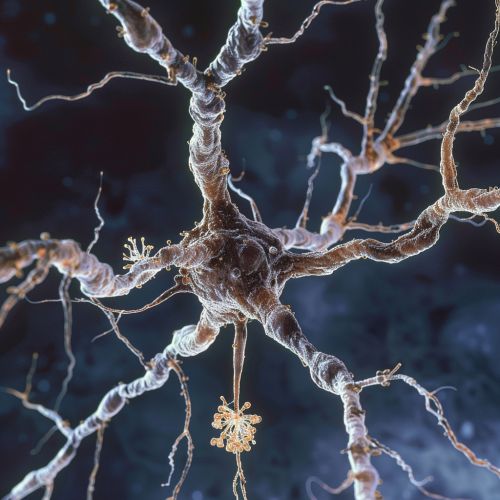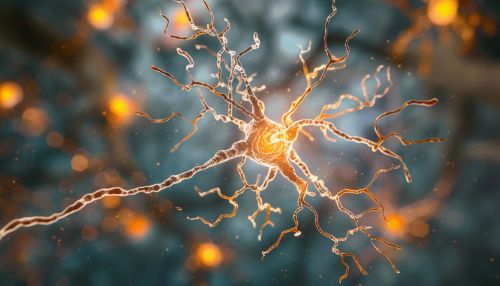Nervous tissue
Overview
Nervous tissue, also known as neural tissue, represents the main component of the nervous system, which includes the brain, spinal cord, and peripheral nerves. It is one of the four main types of animal tissue, along with epithelial tissue, muscle tissue, and connective tissue. Nervous tissue is characterized by its capacity to generate and transmit electrical signals, known as nerve impulses or action potentials, which allow it to rapidly control the functions of the body.


Structure
Nervous tissue is composed of two main types of cells: neurons and neuroglia.
Neurons
Neurons are the fundamental units of the nervous system, responsible for transmitting information throughout the body. Each neuron consists of a cell body, which contains the nucleus and other organelles, and elongated extensions called axons and dendrites. The axon conducts electrical impulses away from the cell body, while dendrites receive information from other neurons and transmit it to the cell body.
Neuroglia
Neuroglia, or glial cells, are non-neuronal cells that provide support and protection for neurons. They are more numerous than neurons and perform many essential functions, including supplying nutrients to neurons, repairing nervous tissue following injury, and regulating the composition of the extracellular fluid surrounding neurons.
Function
The primary function of nervous tissue is to perceive changes in the internal and external environment, to integrate this information, and to coordinate the body's responses. This is achieved through the generation and propagation of electrical signals, or action potentials, which are transmitted rapidly along the axons of neurons.
Sensory Function
Nervous tissue is involved in sensing stimuli from both the external and internal environment. Sensory neurons transmit information from sensory receptors, which detect changes in temperature, pressure, light, and chemical composition, to the central nervous system.
Integrative Function
The integrative function of nervous tissue involves the processing and interpretation of sensory information, and the formulation of appropriate responses. This function is primarily carried out by interneurons, which form complex networks within the brain and spinal cord.
Motor Function
The motor function of nervous tissue involves the transmission of signals from the central nervous system to effector organs, such as muscles and glands, to bring about a response. Motor neurons carry these signals along their axons, leading to contraction of muscles or secretion of hormones.
Pathology
Nervous tissue is susceptible to a variety of diseases and disorders, including neurodegenerative diseases, such as Alzheimer's disease and Parkinson's disease, and injuries, such as spinal cord injury and traumatic brain injury. These conditions can lead to significant impairment of sensory, motor, and cognitive functions.
